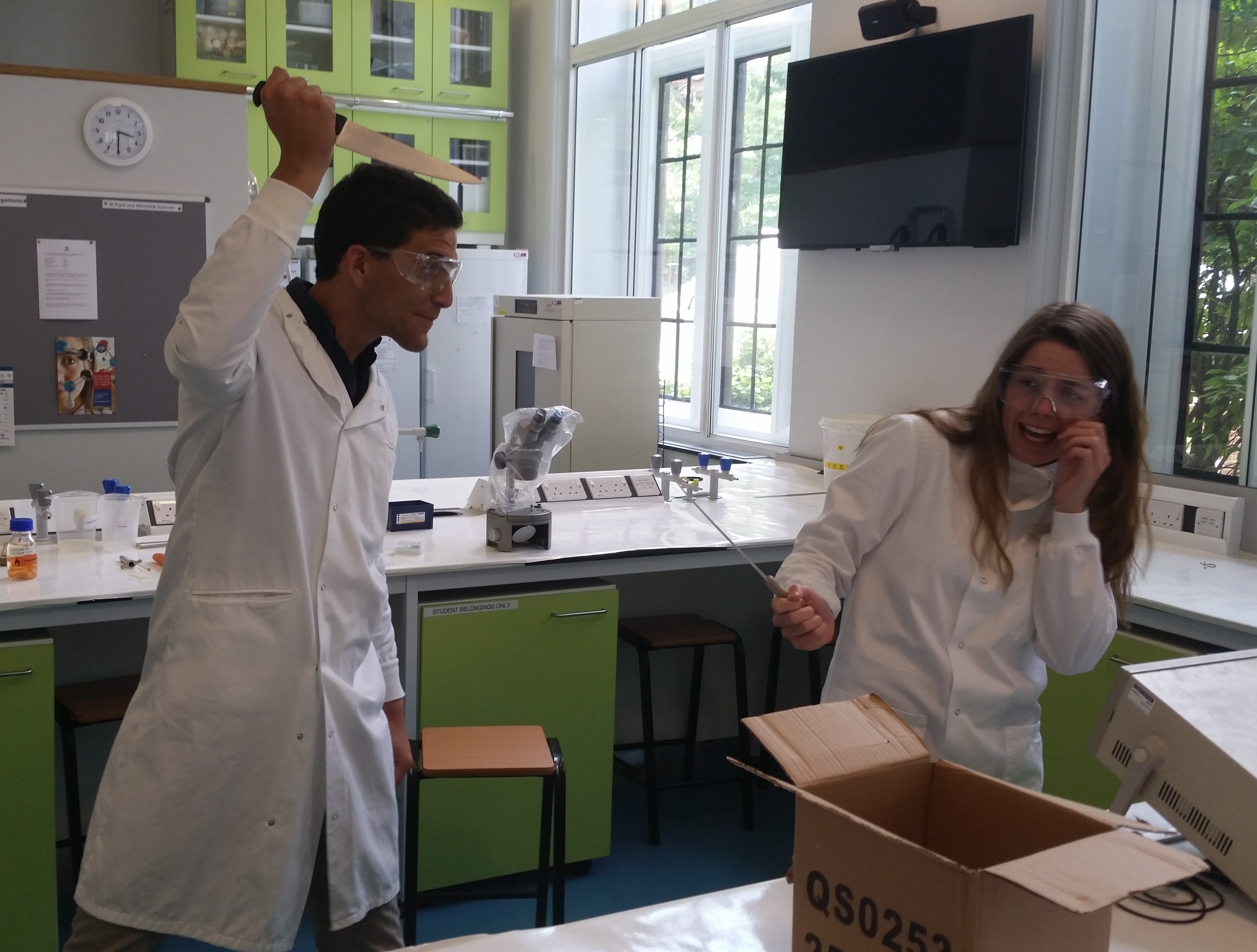Safety
Introduction

Note: Do not do this at the lab or home
Safety is of course an important concern in any synthetic biology project. There already exist strict laws and regulations in most countries regarding development and handling of genetically engineered organisms in order to prevent them from causing harm to people or the environment, and it is vital that any iGEM team not put itself or others at risk through its work.
Choosing a project in the Hardware track allows our team to minimise any safety issues associated with genetic engineering: our project involves little actual DNA manipulation in living organisms, and the small amount that we have done is minor and routine. Still, we have adopted a number of practices to ensure that our project poses minimal risk to any person or property.
What safety issues does our project have?
A microscope such as the one we have developed has very few safety concerns. Microscopy is a well-established field, dating back hundreds of years, and techniques for it are common practice and ensure safety. The two potential safety hazards are damage to eyes and skin from the illumination, and risk of electric shock.
Lighting safety
Some fluorescent compounds require UV light in order to excite them to emit radiation. UV light is potentially harmful to the eyes and skin if not used with caution, and should be handled carefully. However, the wavelength of UV light used (395 nm) is well above the wavelength considered most harmful to humans, around 260-270nm [1], and the power of the LEDs used is fairly low. Any UV radiation a user would normally be exposed to while using our microscope would be significantly less intense than that of sunlight, so this was not considered a serious safety issue.
All the lights in the final design of OpenScope are contained within the epi-cube, so no direct light from them will reach the user.
Electrical safety
OpenScope uses electric light and it is computer-controlled, which involves the use of electricity in our microscope. All electricity used to run OpenScope was 12V DC or lower, which is a safe voltage. Anyone who builds one will need to do some wiring, but all instructions are clear and designed to minimise risk.
The nature of our project makes it inherently impossible for anyone, even with malicious intentions, to use it to harm others or the environment.
Biosafety
The biological side of the project involved fairly standard, routine transformations with fluorescent proteins in order to test our equipment. Marchantia, the transformed plant we imaged, is a common weed which poses no threat to humans. However, we were kindly supplied with pre-transformed GFP-expressing Marchantia, and were not required to carry out any of our own transformations using Agrobacterium tumefaciens. As part of our collaborations, we performed transformations of E. coli provided by the William and Mary iGEM team. This was done following the same protocol they used and with standard safety procedures. For more information see our Collaborations Page.
Organism used
|
Biosafety level
|
Risk assessment |
| Marchantia polymorpha |
Level 1 |
No individual or community risk |
| Escherichia coli K12 |
Level 1 |
No individual or community risk |
Glass Cutting
In order to tailor dichroic mirrors to our Epi-cube design, glass cutting was necessary. Small fragments of cut glass therefore posed a risk to the eyes and skin of those involved in cutting the glass, and if not removed to the environment potentially to other lab users. To address there risks, glass cutting as carried out in a large tray to prevent stray glass fragments reaching the lab bench. Persons involved in glass cutting wore lab safety glasses at all times, and were equipped with two layers of gloves and lab coats to prevent damage to skin. Glass cutting was supervised at all times by trained first-aiders, and the area cleaned after use.
How secure is our lab?
All of our work took place in the Teaching Lab at the Department of Plant Sciences, University of Cambridge. This lab is GM-certified, meaning that it was designed with work on genetically modified organisms in place. For example, its windows cannot be opened so that any organisms developed within it cannot escape through that route.
The lab is certified for biosafety level 1, meaning that it can only be used to handle biological agents which are harmless to individuals and to the public.
What safety practices have we adopted?
Safety was high in our minds while we were selecting our project. Several ideas were discarded during our brainstorming sessions at the start of the project because they wouldn’t be safe enough.
We were all given a lab induction and a safety briefing before we were allowed to handle any potentially dangerous materials. All of the department’s safety policies were explained to us and we were introduced to the departmental safety officer.
All standard laboratory procedures were followed at all times. Lab coats were worn at all times while doing any wet work and all equipment was cleaned before leaving the lab. The hazard level of any waste was evaluated before disposing of it appropriately. Of course, all relevant laws and regulations regarding biosafety were followed and were generally part of our normal lab procedures.
Outreach day
We hosted an outreach day on the 11th of September for visiting secondary students from a range of schools throughout the UK. A total of 18 students, supervised by their teachers, were invited to participate in two workshops organised by the Cambridge-JIC iGEM team. For more information on the Outreach day, visit our Outreach Page. Risk assessments were completed and all the students were supervised at all times.These can be found below (note: signatures were removed from the forms for privacy reasons).
References
[1] International program on chemical safety, “Environmental health criteria 160 - Ultraviolet radiation,” World Health Organization 1994, http://www.inchem.org/documents/ehc/ehc/ehc160.htm.










